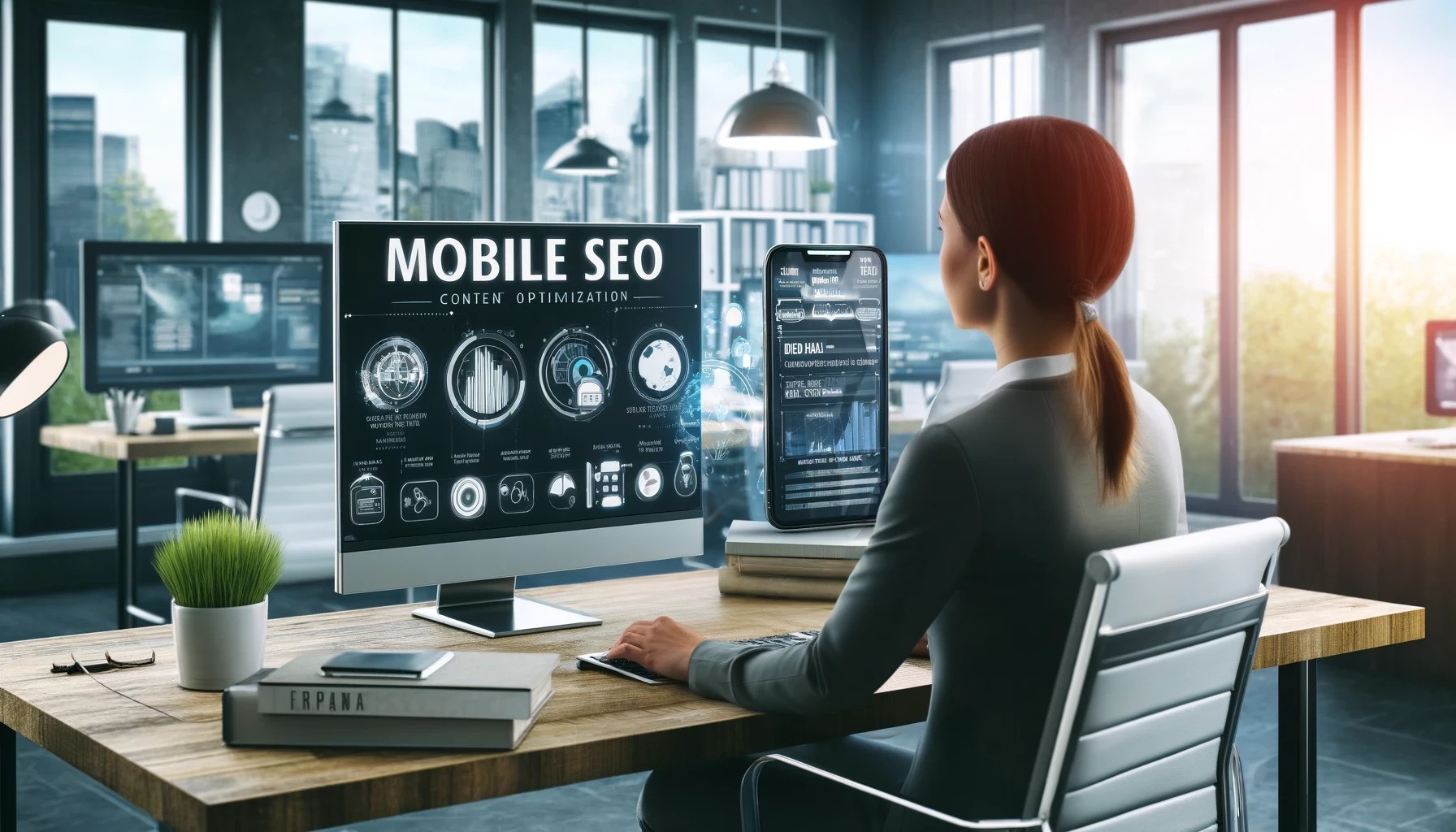A Comprehensive Understanding of Internal Linking
Internal linking is an essential component of any website, connecting different pages within the same domain. Hyperlinks play a crucial role in guiding users through a website, improving navigation and enhancing the overall web experience. These links can be in the form of buttons, clickable images, or anchor text, seamlessly directing visitors to relevant content or resources within the site. By incorporating internal links, website owners can facilitate easy access to information, keeping users engaged and encouraging them to explore more sections of the website. Additionally, internal linking can also benefit your On-Page SEO efforts by helping web crawlers navigate and index pages effectively, ultimately driving organic traffic to the site. In this article, we will delve deeper into the significance of internal linking and its impact on user experience, SEO, and overall website functionality.
The Basic Concept of Internal Linking
Internal linking is a crucial aspect of website architecture, as it involves connecting various pages within the same domain. Essentially, internal links are created using anchor text, clickable images, or buttons, guiding users from one page to another on the same website. These links play a significant role in improving website navigation and enhancing the user experience. For example, linking your homepage to other important pages like product categories or contact page can help users easily navigate through your website, which is a fundamental aspect of SEO and good website architecture.
Understanding the concept of internal linking is essential to harness its benefits fully. Internal links are any hyperlinks that direct users from one page to another within the same domain. These links aid in establishing a logical hierarchy and spreading link authority throughout your website. By strategically placing internal links, you can improve the indexation of your site by search engines like Google. This, in turn, can positively impact your website’s rankings as search engines consider factors like page authority, link authority, and the relevance of the anchor text used in internal links.
Purpose of Internal Linking in Websites
Internal linking serves as an integral component of website navigation and SEO strategies. What is Internal Linking? It refers to any link from one page on your website to another page on your site. These hyperlinks play a crucial role in guiding users through various sections of your website, enhancing their experience and keeping them engaged. You can create internal links using anchor text, buttons, or clickable images. By linking different pages together, you establish a pathway for visitors to navigate seamlessly, ensuring that they can easily find relevant content such as articles, blog posts, or product pages. Optimizing link placement and anchor text helps boost your homepage authority, decrease bounce rate, and encourage users to explore more of your website’s offerings. Setting up a logical website architecture with internal links contributes to improved indexation by search engines like Google, positively impacting your site’s crawl budget and SEO performance.
One of the key purposes of internal linking in websites is to enhance user engagement and drive conversions. When you strategically place internal links within your content, each link acts as a pathway that leads users to related or relevant information on your site. Blog links, category pages, or even navigation links can guide visitors to pages featuring more in-depth content, product details, or additional resources. By employing best practices such as using descriptive anchor text and ensuring that the linked pages are contextually related, you can encourage users to explore more of your website. This not only improves user experience but also helps search engines to better understand the hierarchy and value of different pages on your site. Utilizing tools like Google Search Console (GSC) to conduct a link audit, checking for broken links, anchor text spam, or nofollow tags can further refine your internal linking strategy for optimal results.
Exploring the Essence of Internal Links
When delving into the essence of internal links, it’s crucial to understand what internal linking is and its role within a website’s structure. Internal links are links that connect one page to another within the same domain, enhancing the site’s navigational capabilities and enabling users to explore different sections seamlessly. By using various forms of links such as anchor text, clickable images, or buttons, internal links guide human visitors and search engine spiders alike through the content hierarchy of a website. For example, linking relevant keywords from a homepage to specific topic pages helps in keyword targeting and boosts the overall link equity of a site. Understanding the concept and power of internal linking is essential for creating a well-structured website that not only makes sense to users but also aids search engines like Google in crawling and indexing all pages effectively.
Defining Internal Links in a Domain Context
Internal links are links from one page to another within a single domain. They are hyperlinks that point to pages on the same domain, created using buttons, clickable images, and anchor text, or the clickable part of the hyperlinks. They take visitors from one page to another on your website seamlessly. When you use hyperlinks to link one page on your site to another page on your website, you are essentially providing pathways for visitors to navigate your site crawl more effectively. Internal links form integral elements of your website’s structure, guiding search spiders through the contents of your site and ensuring they find and index all the relevant information.
Any link from one page on your website to another page on your website constitutes an internal link. These links play a crucial role in drawing visitors deeper into your website and helping them discover more relevant information. Internal linking is a powerful tool in the hands of a site owner or professional in the SEO world, as it can significantly impact the crawl depth and limit of search spiders. By strategically placing internal links throughout your content pages, menu, or search boxes, you open up linking opportunities that can boost traffic, improve user experience, and increase revenue potential.
Highlighting the Approach to Creating Internal Links
Internal linking is a crucial aspect of website management that not only enhances the user experience but also aids in building SEO equity. Webmasters must understand the ways in which internal links work to guide visitors upwards through the site while also passing organic link juice between pages. By using anchor text, buttons, or clickable images, internal links can effectively answer user questions and keep them engaged with the content. When implemented correctly, internal linking serves as a valuable method for increasing engagement, improving site crawl ability, and boosting overall SEO benefits.
Internal links are a fundamental part of any website’s structure, influencing its crawlability, indexation, and search engine visibility. When webmasters strategically link pages within their site, they signal to search engines the relative importance and relationship between different topics and pages. Utilizing the “nofollow” tag, understanding link attributes, and avoiding common pitfalls such as injection spam or i-frames are essential guidelines for effective internal linking. By following best practices in internal linking, webmasters can harness the wealth of benefits it offers, from enhancing site navigation to increasing link popularity and ultimately improving the overall user experience.
The Impact of Hyperlinks in Internal Linking
Hyperlinks play a crucial role in the realm of internal linking by connecting different pages within the same domain. They are essential components that contribute to the overall structure and SEO performance of a website. By strategically placing links throughout the content, a pyramid structure is formed, guiding users and search engines like Google through the site. These links act as signposts, directing traffic efficiently and enhancing the user experience. Whether it’s breadcrumb links in a top-down approach or footer links leading to product pages, internal hyperlinks serve the purpose of keeping users engaged and guiding them through various pages. When implemented effectively, hyperlinks not only aid in navigation but also influence the flow of “link juice,” ultimately impacting the ranking and visibility of webpages across the site.
The Connection Between Hyperlinks and Internal Linking
Hyperlinks and internal linking play a crucial role in website navigation and user experience. Internal linking involves connecting different pages within the same domain, helping users navigate your site seamlessly. By strategically placing hyperlinks within your content, you provide readers with easy access to other relevant resources or blog posts. Moreover, internal links can aid in passing authority from one page to another, contributing to better site navigation and improved rankings. When done effectively, internal linking not only guides readers through your website but also enhances the overall browsing experience.
Understanding the concept of internal linking and utilizing hyperlinks can provide numerous benefits for your website. Internal links offer opportunities to direct readers to your best-selling products, top-performing blog posts, or essential services. By incorporating relevant anchor text and using keyword-rich links, you can enhance the authority and visibility of specific pages. This strategic approach also facilitates site navigation, encourages visitors to explore different parts of your site, and improves the overall user experience. By focusing on the quality rather than the quantity of internal links, you can create a well-structured site architecture that promotes engagement, drives traffic, and boosts search engine rankings.
The Role of Hyperlinks in Navigating the Same Domain
Internal linking plays a significant role in aiding users to navigate within a website seamlessly. With every click on a hyperlink, users are directed to another page on the same website, making it easier for them to access relevant content. These hyperlinks are essential in establishing a logical structure for your website, helping users find their way around and discover additional information that adds value to their browsing experience. By strategically placing internal links within your content, you guide users through a journey of exploration, keeping them engaged and potentially converting their visit into a tangible outcome for your business or website.
Understanding how to optimize internal links can greatly impact your website’s SEO game. By leveraging tools like Google Search Console and Webmaster Tools, you can gather insights on the performance of your hyperlinks and make informed decisions about changes or improvements. Through regular site audits and crawls, you can identify areas where internal linking can be enhanced, boosting the overall link authority of your website. This strategic approach ensures that each page on your site contributes to the site’s overall SEO authority, improving your chances of ranking higher in search results and attracting more organic traffic to your website.
Harnessing the Power of Internal Linking in Website Navigation
To harness the power of internal linking in website navigation effectively, it is essential to understand what internal linking is and its importance. Internal links are any links within a website that direct users from one page to another within the same domain. These links play a crucial role in guiding users through the site, improving navigation, and boosting SEO rankings. By strategically incorporating internal links with relevant anchor text and keyword phrases, businesses can enhance the user experience, promote specific products or services, and increase conversions. SEO specialists often conduct audits to ensure that the link structure is optimized for search engines like Google and Bing. In this way, internal linking not only helps users find relevant content but also aids search engines in understanding the website’s structure and content hierarchy. By focusing on creating a well-structured internal link network that leads users to the best and most relevant posts, products, or business landing pages, companies can leverage internal linking to its fullest potential.
How Internal Linking Influences User Navigation
Internal linking is a fundamental aspect of website navigation. By strategically placing links within your pages, you can guide visitors to explore more content on your site easily. Whether it’s directing users to related blog posts, connecting parent and child pages, or highlighting cornerstone articles, internal links play a crucial role in structuring your site for both users and search engines. These links not only enhance the user experience by providing a smooth flow between different sections of your site but also contribute to improving your site’s overall SEO performance.
In addition to enhancing the user experience, internal linking also influences the way search engines assess and rank your site. When you implement a strong internal linking strategy, you are essentially guiding search engine crawlers like Googlebot through your site, helping them discover and index new pages efficiently. By strategically placing internal links to important pages, such as cornerstone content or target pages for keyword research, you can boost the visibility of your site in search results. Internal links also help establish relationships between different pages and categorize your content effectively, contributing to a well-structured and optimized website that attracts more organic traffic.
Enhancing Website Usability with Effective Internal Linking
Internal linking plays a crucial role in enhancing website usability by connecting different sections and categories within a website. These internal links are created using various elements like clickable images, anchor text, or buttons that guide users from one page to another on the same domain. By strategically placing hyperlinks within the content, site owners can improve navigation and provide visitors with easy access to more information related to the topic they are exploring. This not only helps in boosting user experience but also signals to search engine bots the relevance and importance of different pages on the site, potentially leading to better page ranking on Google search results.
Internal linking with a thoughtful approach can significantly benefit websites in terms of SEO and user experience. By dividing content into smaller sections with relevant internal links, site owners can guide users through the website’s core topics in an organized manner. Additionally, using internal links in the navigation menu, sidebar, or at the bottom of blog posts can help users discover more resources and keep them engaged on the site. This method also aligns with the “pyramid” rule of website architecture, where the top represents the core topics and the subcategories branch out to cover more specific details, offering people a chance to delve deeper into the information they are seeking.
Insights on Hyperlinking to Resources on the Same Site
When it comes to insights on hyperlinking to resources on the same site, a crucial understanding of internal linking basics is essential. Internal links are spots within your content that seamlessly direct visitors to different pages within the same website. Whether you’re guiding clients to product pages, blog posts, or specific information, the purpose of internal linking is to enhance website usability and assist in SEO workouts. By strategically placing links in the text, sidebar, footer, or other accessible options, search engine crawlers can efficiently navigate through your site’s structure. By following best linking practices and anchor text guidelines, you can shape the way visitors interact with your content, improving their overall experience and ranking performance.
The Advantage of Hyperlinking to Intra-Website Resources
Internal linking is a crucial part of SEO strategy, connecting various pages of your website. By linking pages internally, you guide users to relevant content and establish a clear structure for search engines to navigate. Whether through footer links, sidebar links, or in-text hyperlinks, creating a well-thought-out internal linking strategy enhances user experience and boosts your website’s authority. This approach not only improves your site’s navigation but also helps search engines crawl and index your content effectively, boosting your Google ranking in the process.
Implementing internal hyperlinks to intra-website resources can also aid in organizing your content clusters and establishing pillar pages. By strategically linking related product pages, reference pages, and topic clusters, you provide users with a seamless browsing experience and signal to search engines the context and relationships between different parts of your website. Moreover, internal linking to product descriptions, customer reference pages, and other valuable resources can assist in redirecting users to essential information, ultimately driving them towards taking action, such as making a purchase or filling out a contact form.
Instances Where Hyperlinking to Same Domain is Applied
When considering instances where hyperlinking to the same domain is applied, one key reason is to improve crawl depth by linking pillar pages to related topic clusters. By strategically interlinking these central content pillars with more specific cluster pages, you guide search engine crawlers through the depth and breadth of your website’s content architecture. Additionally, internal links can be used within blog posts to direct visitors to relevant articles, enriching their reading experience and increasing the average time spent on your site. Linking between pillar and cluster pages also aids in boosting the indexation and organic traffic of your content by ensuring that all pages are easily accessible and discoverable.
Another crucial point in employing internal linking to the same domain is the effective navigation it offers users towards essential pages, such as campaign landing pages or product categories. By integrating links within the body content, sidebar, or footer of your website, you provide users with seamless access to relevant information, enhancing their overall user experience (UX). For example, including anchor text links in menu items can significantly improve user control in navigating through different content topics or product groups. By incorporating internal links within your website’s architecture, you can ensure that visitors easily find the information they seek, leading to higher engagement, more clicks, and increased conversions.
Delving into the Functionality of Hyperlinks
Understanding the functionality of hyperlinks is essential in optimizing website navigation and improving user experience. Internal links, which are any link from one page on your website to another page on your website, play a crucial role in guiding visitors through your site. These hyperlinks are created using buttons, clickable images, and anchor text, seamlessly redirecting users within the same domain. By incorporating internal links in your content, you enhance user engagement and facilitate easier access to relevant information. Monitoring and managing internal links with tools like backlink analytics and SEMrush site audit tool can help identify and resolve any link issues, ensuring a smooth navigation experience for your audience.
Internal Linking Takeaways
To understand the significance of internal linking, it is crucial to delve into its core concepts and purpose within websites. Internal links are connections from one page to another within the same domain, crafted using various techniques such as clickable images, buttons, or anchor text. These hyperlinks play a pivotal role in guiding users across different web pages on a site, ultimately impacting website accessibility and user navigation. By strategically placing internal links, websites can enhance their usability, improve SEO value, and create a win-win situation for both users and search engine crawlers. It is essential to optimize internal linking structures by avoiding redirect chains, loops, and other site audit issues to ensure search engine crawlers efficiently crawl and index web pages. By adhering to best practices and continuously monitoring for improvements, websites can harness the power of internal linking to boost their online visibility and relevance.
FAQS
What is internal linking?
Internal linking is the practice of linking one page of a website to another page within the same website.
What is the purpose of internal linking in websites?
Internal linking helps in enhancing website navigation, improving user experience, distributing page authority and ranking power, and increasing the visibility of important pages.
How does internal linking influence user navigation?
Internal linking provides users with a clear pathway to navigate through the website, discover related content, and easily access relevant information, thereby improving user engagement and retention.
What is the difference between internal links and hyperlinks in the context of websites?
Internal links refer to links that connect pages within the same website, while hyperlinks are clickable elements that can be internal (within the same website) or external (leading to a different website).
How can effective internal linking enhance website usability?
By strategically linking relevant pages and resources within the website, internal linking can guide users to valuable content, improve website structure and organization, increase page views, and boost overall user satisfaction.





